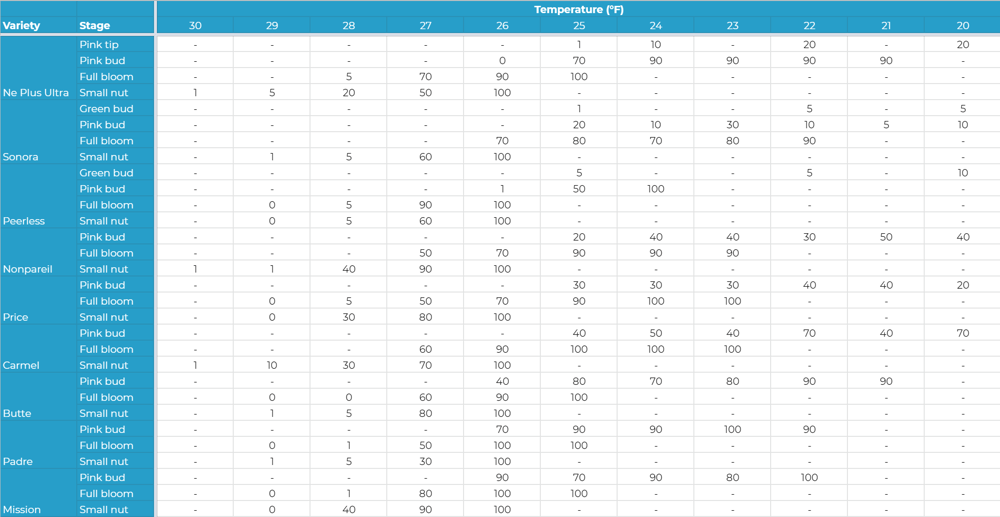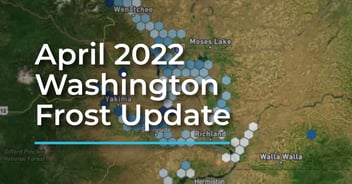
Almond bloom is starting to pop up all over the Central Valley which means now is the time to think about factors that could affect your bloom period and fruit set.
3 Management Tips for Protecting your Fruit Set During Almond Bloom
Bloom Diseases
There are many different bloom diseases that can cause yield and quality decreases at harvest. The first factors to consider are the weather and the environmental conditions.
- If conditions are wet, rainy, and warm, your trees are at risk for brown rot, bacterial spot, and shot hole.
- If conditions are wet, rainy, and cool, your orchard is at risk for green fruit rot.
|
Weather Conditions |
Temperature |
Disease Risk |
|
Wet and rainy |
Warm |
|
|
Cool |
|
💡 Semios Tip: Use the Semios app to get a per-acre view of your orchard's current and forecasted in-canopy climate conditions.
You will also want to consider the percentage bloom your orchard is at because each disease infects the tree at different stages of bloom - learn more here.
💡 Semios Tip: Semios offers a bloom model that tracks nonpareil and Monterey percent bloom by day. Use these bloom tools along with your in-field scouting to get an idea of your trees’ bloom status.
Frost Considerations
In recent years, frost has been a concerning factor during almond bloom. Cold temperatures can result in nutlet loss and decreased fruit set which can negatively impact yield.
Almond variety and bloom stage are the driving factors that will determine what temperature will put your buds at risk.
Figure 1 shows a table from “The Almond Production Manual” by Joe Connell and Richard Snyder that provides the temperatures and bloom stages for the main almond varieties.
Turning on irrigation systems overnight during the coldest risk periods will cause the water to freeze, creating a heating effect that can reduce the impact of frost.
Figure 1. Percentage of damage to almond exposed for 30 minutes to cited temperatures during various growth stages. Reproduced from the Almond Production Manual
💡 Semios Tip: Semios frost tools help growers identify any areas of risk across an orchard at a per-acre level. Growers can set frost alerts and be automatically notified when damaging temperatures are approaching.
Spray Timing when Bees are Present
Having adequate bees in place is essential for good pollination. The next step? Ensuring chemical applications are timed to limit impact to the bees.
🐝 Check out when bees are active in your region using our California Bee Hours Dashboard.
💡 Semios Tip: The Semios pollination tools factor in your unique in-canopy conditions including temperature, wind, and rain to help you track how many bee hours you have accumulated. The tool will also forecast when your bees will be active. Use these tools to time sprays around bees.

Sources
Sacramento Valley Orchard Source: Almond Bloom Diseases
Micke, Warren C. The Almond Production Manual. 1996. The University Of California, Division of Agriculture and Natural Resources.
Related Posts
Tracking Bee Active Hours and Bloom



.jpg?width=352&name=3-Reasons-to-Monitor-your-Winter-Crops-Preview-Image%20(1).jpg)
